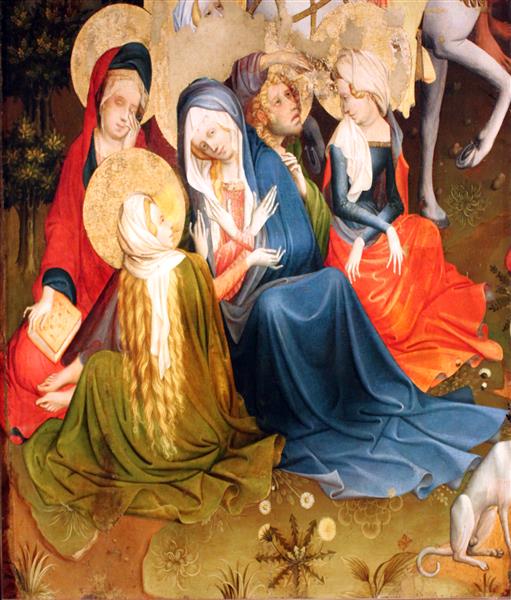The women who were present at the crucifixion of Jesus are an intriguing mystery. Several were named Mary. In the shared tradition of Mark, Matthew, and Luke, the women don’t approach the cross. They stand "at a distance," probably for the usual reasons: Women tried to be invisible in public. And they would have reason to fear their treatment by Roman soldiers.
Mark, who writes first, doesn’t give us a precise number of how many women looked on from a distance. He names only three: Mary Magdalene, Mary the mother of James and Joses, and Salome. While not an original disciple, Mark offers an account reputed to be from Peter. Only John's late gospel records specifically the presence of Mary, mother of Jesus. All the women there, according to Mark, had been with Jesus since Galilee.
The names James and Joses provide a clue about one of the Marys at the cross. These men are mentioned elsewhere in Mark among four "brothers of Jesus"—possibly cousins of some degree. This makes their mother an “aunt” of Jesus, present to comfort his mother. Mary may have been a family name, the way I have four relatives named Paul. John’s account lists a Mary identified by her husband Clopas rather than by sons. Both Marys could be the same person.
Like Mark, Matthew references four brothers/cousins of Jesus: James, Joseph, Simon, and Judas. In Hebrew, "Joseph" and "Joses" are the same name. At the crucifixion, Matthew mentions James and Joseph as sons of a certain Mary. Matthew verifies the presence of Mary Magdalene and also the mother of Zebedee’s sons James and John. To harmonize Mark and Matthew’s narratives, Mark’s Salome is often identified as Zebedee’s wife.
In Luke’s crucifixion story, the Galilean women are described among "acquaintances" of Jesus standing at a distance. None are named.
John locates the women directly at the foot of the cross. His list includes the mother of Jesus, his mother's sister, Mary wife of Clopas, and Mary Magdalene. Without punctuation in the Greek, however, it’s not clear whether Mary wife of Clopas IS the sister of Jesus' mother, or two separate women. John says Jesus gives his mother into the care of a beloved disciple. Tradition claims this is John, making him the lone male disciple present. Other scholars identify Mary Magdalene as the beloved disciple who took Mary home, since only women are known to have remained near the cross.
Scripture: Mark 6:3; 15:40-41; 16:1; Matthew 13:55; 27:55-56; 28:1; Luke 23:48-49, 55-56; 24:1-11; John 19:25-27; 20:1
Sources: The Characters of the Crucifixion – Joseph Fichtner, OSC (Collegeville, MN: Liturgical Press, 2000); The Passion and Death of Jesus (DVD and audio CDs)– Raymond Brown (Mahwah, NJ: Paulist Press/ Ewloe Clwyd, Wales: Welcome Recordings, 2015)




